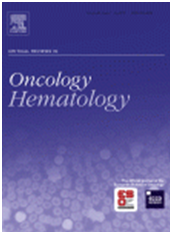Boublikova L, Buchler T, Stary J, Abrahamova J, Trka J. Critical Reviews in Oncology Hematology. 2014 Mar;89(3):366–85. doi: 10.1016/j.critrevonc.2013.10.001. Epub 2013 Oct 11. IF: 4,637

Department of Paediatric Haematology and Oncology
Abstract
Testicular germ cell tumors (TGCTs) are the most common solid tumors in young adult men characterized by distinct biologic features and clinical behavior. Both genetic predispositions and environmental factors probably play a substantial role in their etiology. TGTCs arise from a malignant transformation of primordial germ cells in a process that starts prenatally, is often associated with a certain degree of gonadal dysgenesis, and involves the acquirement of several specific aberrations, including activation of SCF-CKIT, amplification of 12p with up-regulation of stem cell genes, and subsequent genetic and epigenetic alterations. Their embryonic and germ origin determines the unique sensitivity of TGCTs to platinum-based chemotherapy. Contrary to the vast majority of other malignancies, no molecular prognostic/predictive factors nor targeted therapy is available for patients with these tumors. This review summarizes the principal molecular characteristics of TGCTs that could represent a potential basis for development of novel diagnostic and treatment approaches.